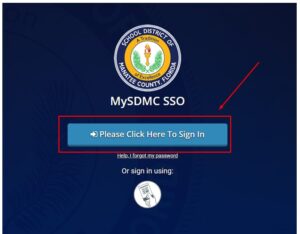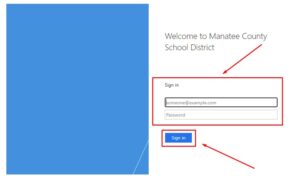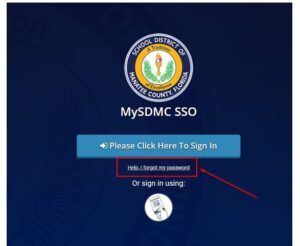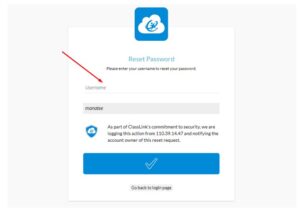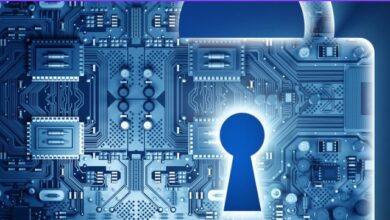SDMC SSO: The Expert Guide to Improved Access 2024
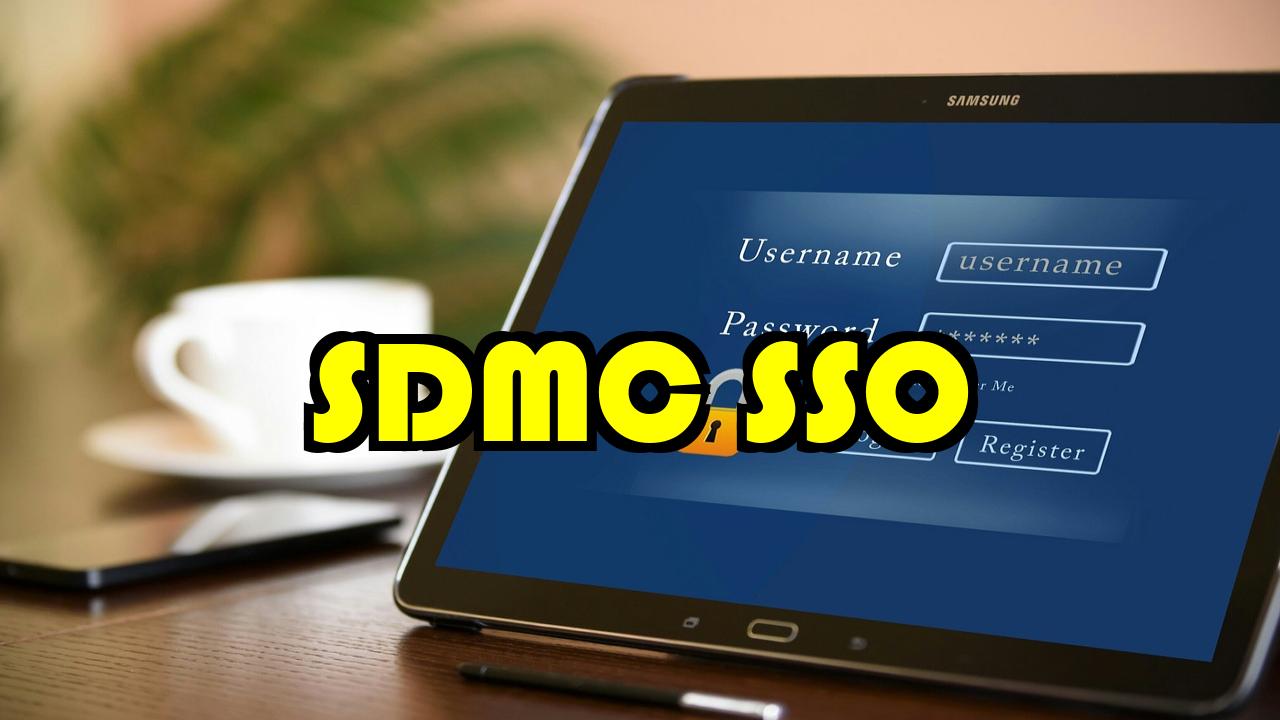
Technology is being used in almost every field of our lives and education isn’t an exception. Many educational institutions have developed different platforms to help them manage their educational procedures.
The School District of Manatee County has done it with SDMC SSO. In this article, I am going to describe the details of the portal comprehensively. I’ll review its features and how you can log in to it as a student. Let’s start.
What is SDMC SSO?
SMDC SSO stands for School District of Manatee County Single-Sign-On. The name expresses its nature and functionality itself. It is an online portal specifically designed for the students of this district.
This American school district has around 80 schools and is responsible for educating around 50,000 students. Each day, there’s something new that happens in the district. It can be an addition to a new course system or an announcement for vacations. Delivering such news can be a little difficult and that’s what SDMC SSO helps with.
It is a central hub students can use to get the latest information about their schools. Not only that; the students use it for keeping an eye on their educational performance and details as well.
Its working functionality is similar to RTI Schedular which is also a learning management system.
How Does it Work?
The functionality of SDMC SSO revolves around a seamless authentication process. Students log in once, it securely stores their credentials. Here are more details about it:
- User Login credentials: Users attempt to access the platform using login credentials.
- Authentication and Authorization: The platform verifies a user’s credentials against a centralized identity database and determines their access privileges.
- Secure Access to the platform: If credentials are valid, it grants a user access.
Features of SDMC SSO:
It offers the following features:
Centralized information hub:
As I mentioned earlier, it works like a complete centralized information hub. Students can get all the data they need to know about their school and overall district. Besides that, there’s information about their schedule, subjects, and grades as well.
Ease of use:
Using this student portal is extremely easy. The school district has designed it in a way that students can easily get on to the portal and get any information they want.
Separate student profiles:
Each student has a separate profile on the platform. These profiles contain all the necessary information related to academics and in general. Since profiles are different, students can easily keep an eye on their academic data individually.
Secured and safe:
Since it is a Single Sign-On, it offers extreme security and safety levels. The platform is designed in a way that you have to input your special login credentials in order to get on to it.
Sometimes, it may walk you through a two-step authentication process for logging in as well. So, your academic and personal information is safe here.
How to Login into SDMC SSO?
Logging into this platform is extremely easy. Here are more details about it:
- First, you need a properly working Internet browser.
- Open it and search for “SDMC SSO login”.
- As with any other search query, Google is going to offer you multiple results here.
- Click on the first link.
- Now, click on “Please Click Here To Sign In”.
- Here, input login credentials including an email address and password.
- Then, click on “Sign in”.
- The site will take you to the portal after that.
Resetting Password on SDMC SSO:
The portal lets you reset your password in case you’ve forgotten it. Here’s how to do it:
- Open the portal.
- Here, click on “Help, I forgot my password.”
- Now, input your username in the designated area.
- Follow any further guidelines until the password has been reset.
Benefits of Implementing SDMC SSO
Improved Security
It significantly enhances security by reducing the risk of password-related vulnerabilities. With a single set of login credentials, users are less likely to use weak passwords or fall victim to phishing attacks. It also uses a strong set of protocols.
Streamlined User Experience
Users can access all authorized applications with a single sign-in, saving time and reducing frustration. Users appreciate not having to remember and input multiple sets of credentials for different applications.
Cost Savings
Implementing this solution can result in cost savings for organizations. The reduced need for password reset support and the associated resources can contribute to a more efficient and cost-effective authentication process. It can reduce IT costs associated with password management, user training, and security breach remediation.
Use Cases and Examples
To illustrate the practical application of it, consider a large enterprise with numerous internal systems. SDMC SSO streamlines access for employees, improving productivity and reducing the frustration associated with multiple logins. Major organizations across various industries have successfully integrated this solution to enhance their operational efficiency. Here are some more use cases in different sectors:
- Education: It enables students and faculty to access learning management systems, email accounts, and other educational resources with a single login.
- Healthcare: It allows healthcare providers to access patient records, electronic health records, and other critical information securely.
- Finance: It provides secure access to financial applications, trading platforms, and customer databases.
Challenges and Solutions
While SDMC SSO offers numerous advantages, implementing it may present challenges. Common issues include compatibility with legacy systems and initial setup complexities. However, these challenges can be overcome with proper planning, thorough testing, and effective communication with users.
Comparisons with Other Authentication Methods
In comparison to traditional login methods, SDMC SSO stands out for its efficiency and security. Unlike traditional methods that require separate credentials for each application, it simplifies the process, reducing the risk of password-related vulnerabilities.
It can be integrated with MFA solutions to provide an additional layer of security.
Future Trends in Authentication Technology
As technology continues to evolve, authentication methods are also advancing.
- Biometric Authentication: SDMC SSO can incorporate biometric authentication methods, such as fingerprint or facial recognition, for enhanced security.
- Risk-Based Authentication: SDMC SSO can adapt authentication requirements based on user behavior and contextual factors.
Best Practices for SDMC SSO Implementation
There are some points that can help you use this portal in the best way. I’ve listed them below:
- Keep your login information safe. Make sure not to share the credentials with any other student.
- If possible, try to change the password regularly. It will further strengthen security.
- Avoid using someone else’s computer or mobile to log in.
- If possible, try to utilize a two-factor authentication method for increased security.
- Keep on checking it regularly to get updates about the district.
Also Read: Privileged Access Management System
Security Measures in SDMC SSO
Ensuring the security of user data is paramount in SDMC SSO implementation. Robust encryption protocols and continuous monitoring are essential to safeguard sensitive information from potential threats.
- Encryption and Data Protection: Implement encryption algorithms to protect user credentials and sensitive data during transmission and storage.
- Access Control Lists (ACLs): Define granular access permissions to restrict access to specific applications and data based on user roles and privileges.
- Regular Security Audits: Conduct periodic security audits to identify and address potential vulnerabilities.
Common Misconceptions About SDMC SSO
Addressing misconceptions is vital for promoting a clear understanding of SDMC SSO. Common myths, such as concerns about the security of a single point of access, can be dispelled through accurate information and communication.
1. Only for large enterprises.
This is not true. SDMC SSO can be used by organizations of all sizes, including small businesses and startups. In fact, SDMC SSO can be a cost-effective solution for small businesses that are looking to improve security and reduce administrative overhead.
2. Too complicated to implement.
SDMC SSO is designed to be easy to implement. The cloud-based solution can be deployed quickly and easily, and there is no need for any on-premises hardware or software. SDMC SSO also integrates seamlessly with a wide range of applications, including cloud-based services, on-premises applications, and mobile apps.
3. Poor Security
It is a secure solution that uses industry-standard protocols, such as SAML and OAuth. It also supports a variety of authentication methods, including multi-factor authentication (MFA). MFA can help to improve security by requiring users to provide additional proof of identity, such as a fingerprint or facial scan, in addition to their username and password.
4. Too expensive
It is a cost-effective solution that is available in a variety of pricing plans to fit the needs of any organization. In fact, it can often save organizations money by reducing administrative overhead and improving security.
5. Not necessary
If your organization uses multiple applications, then it can be a valuable tool for improving security and reducing administrative overhead. It can also help to improve the user experience by making it easier for users to access applications.
Here are some additional benefits of using SDMC SSO:
- Reduced password fatigue
- Improved compliance with industry regulations, such as HIPAA and PCI DSS.
- Increased productivity
- Reduced IT costs by reducing the need for password resets and other security-related tasks.
Tips for Choosing the Right SDMC SSO Solution
When selecting a solution, organizations should consider factors such as compatibility with existing systems, scalability, and user-friendliness. Tailoring the solution to specific organizational needs ensures optimal performance.
Conclusion
SDMC SSO is a secure and efficient student login portal used by the School District of Manatee County. It is basically used for organizing academic information of students and helping schools organize educational procedures.
There are a lot of different features this portal offers that have been mentioned above. Logging into it is also very easy and you can get on to it using simple guidelines.
Frequently Asked Questions
What is meant by single sign-on?
This technology allows users to log in once and gain access to various applications, platforms, or services without the need to repeatedly enter login credentials.
Is SMDC SSO Safe?
Yes. However, if someone manages to gain access to a user’s SSO credentials then he can access the portal.
What are the benefits of SSO?
SSO comes with benefits such as reduced IT costs, improved security posture, and streamlined user experience.
Can I log into the portal with my QuickCard?
Yes. The portal allows you to log in using the QuickCard.



